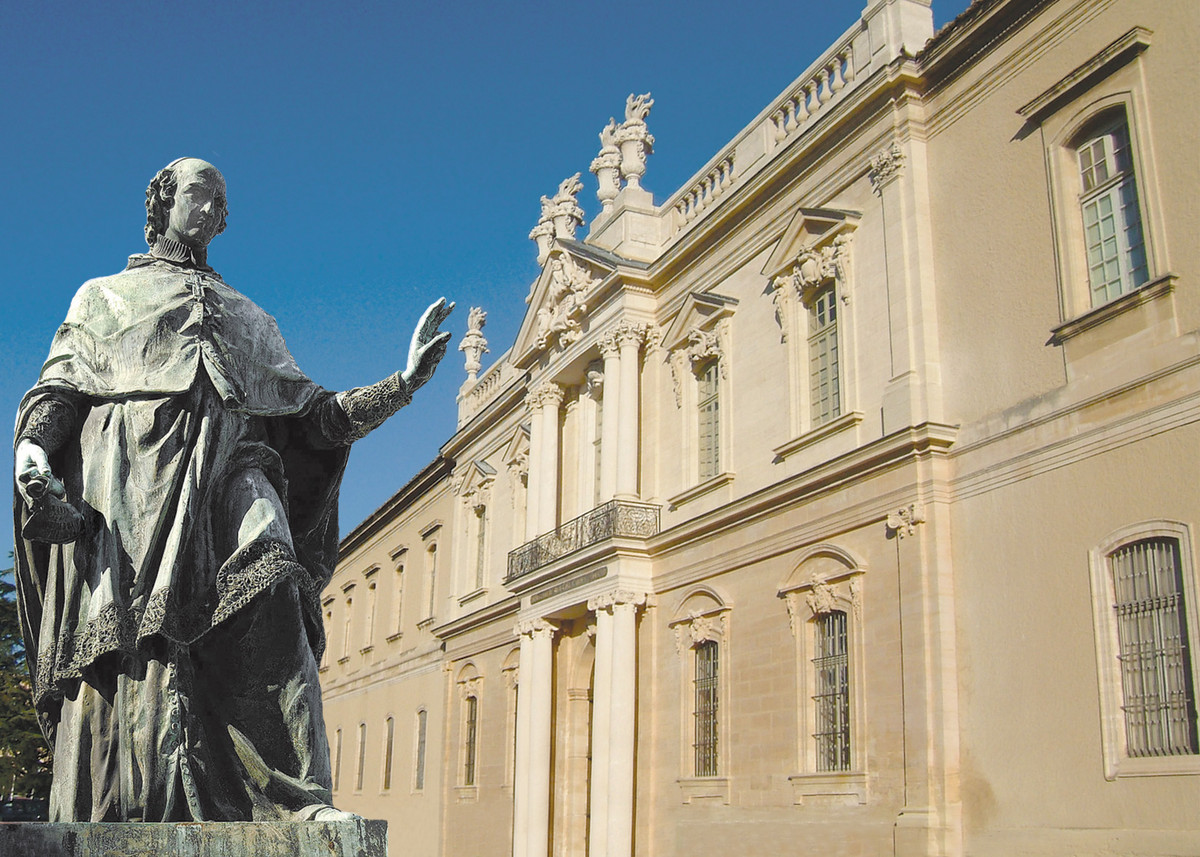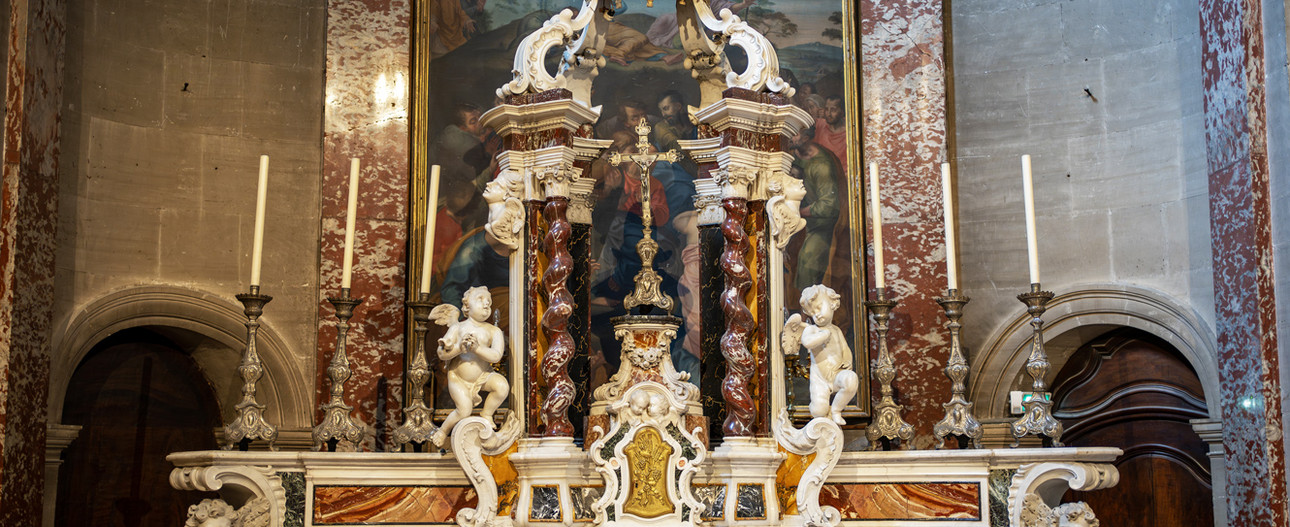The Hôtel-Dieu Chapel
Tucked away between the pharmacy and the convent, which took care of the body, a small chapel, harmoniously proportioned and pristinely decorated, took care of the soul.
The walls and arches were meticulously carved into stone with joints decorated with geometric patterns. The space is brought to life through a striking entablature, pilasters and horizontal beams produced in Languedoc using red marble from Caunes, as well as capitals, consoles and ties across the arches sumptuously sculpted with plant motifs and clouds of angels.
To the right of the choir, the chapel joins with a room reserved for the sister nurses, where they partook in religious services from the other side of a towering, richly decorated, wrought iron gate.
The choir is fitted with a Baroque-style high altar made of colourful marble, placed in front of a large copy of The Transfiguration by Raphael that d’Inguimbert brought back with him from Italy. To the left of the choir, the bishop’s stone tomb was carved by Étienne d’Antoine in 1774. Here, the bishop’s bust is surrounded by allegories representing his two creations, the library and the hospital.
The wrought iron communion grate separating the sanctuary from the nave, which was created by Joseph Froment in 1763, also pays tribute to d’Inguimbert through the use of his coat of arms. Painting masterpieces from the 17th and 18th centuries finish off the décor in the side chapels (Saint Anne, Virgin and Child and The Holy Family, attributed to Pierre Parrocel, and Virgin and Child attributed to Nicolas Mignard). In 1898, the fourth chapel welcomed the mausoleum sculpted by Émile Aldebert in tribute to Isidore Moricelly, another benefactor of Carpentras.



